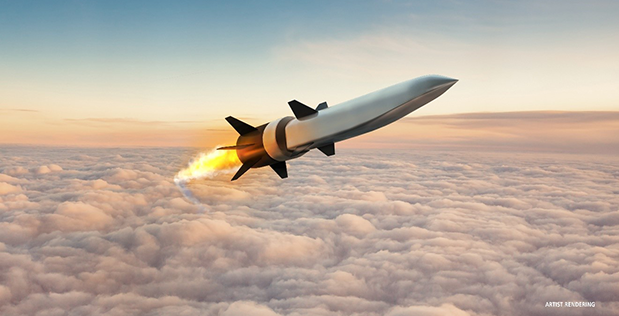That's what I used to think but the reality is that big ticket CAPEX spending is almost always a sore issue. We aren't able to conclusively sanction even 1 IAC-2, let alone 2.
Not only that, the scope of our ambition is also dropping down to size that befits our pockets. Gone are the dreams of a nuclear-powered ship, IN realized we can't afford it. They went to conventional and now latest info is that they are actually downsizing the ship from initially planned 65k tons.
All I can say is, stuff like OROP has eaten too much into defence spending, actual CAPEX growth YoY is not as impressive as Defence budget growth YoY (which itself is modest, almost meagre when taking inflation into account).
In short, don't expect CAPEX to be flowing like water. Especially when whatever is available will be split between several big-ticket programs simultaneously.
I am not expecting CAPEX to "flow like water".
I am expecting it to grow in concert with India's GDP. Which has been the case till now. Take the previous decade, for example between 2011-12 and 2021-22, Defence CAPEX has grown at an average rate of 7%. Similar to the rate at which India's GDP has grown.
Note, I am talking about CAPEX, not pensions, revenue, etc. Even if you take them, between 2019-20 and 2020-21, pensions budget
dropped by 1% while CAPEX
grew by 10%.
Navy is downsizing IAC-2 from 65,000 tons because instead of ordering an IAC-1 this decade and then IAC-2 next decade, they are ordering the IAC-2 itself in this decade. This decade, they are running short of funds for a big carrier.
Nuclear IAC-2 is not being considered because of technological issues outlined by BARC, not because of lack of funds.
Only problem I see is the relative share of Navy in the total Defence CAPEX, especially because Army is looking to increase its share in the Defence CAPEX as it really is short of funds. If the Navy's capex % holds at its current level, my calculations will be in the ballpark. Therefore I disagree with your assessment. Although I will concede that the scenario you mention could come to pass if the Army is allowed to poach the Navy's share of Defence CAPEX.
Let's not forget the Navy lost the SSN funding war with GOI. The CDS/MoD have convinced IN that the funding for SSN program will have to come from Navy's own capex, the PMO will not be funding it (as was the case with Arihant) as IN was hoping they would (hence SSNs were clubbed with SSBNs under same "strategic gamut" in IN terminology). All the long-term plans drawn up by the Navy in times past have yet to take the effect of this decision into account.
SSN is not an NCA asset. I don't understand why anybody would expect PMO to pay for it. Strategic Gamut is just Navy trying to pull a fast one. We have bastion strategy w.r.t. our SSBNs. Why would our precious few SSNs pull security for an SSBN in peacetime? SSN are a naval intelligence platform vital in peacetime. Maybe in wartime, they'd be deployed to pull security for the SSBN. But that doesn't mean they should be put under PMO. Or tomorrow, you'll have Army and Air Force demanding funds from PMO for all SAM systems deployed for security of ground and air based NCA assets.
Will SSN be under Strategic Forces Command? No. It will be a fleet asset. So no point asking PMO to fund it.
Once the core is mature, upscaling/downscaling is a straightforward matter. Not unlike the relationship between F404 and F414.
The INFRA JV engine itself would be an example of a downscaled FCAS core.
Agree with your point, but F-414 is not "upscaled" version of F-404, rather its an "upgraded" version with same dimensions and stages, but newer materials.
Nah, Raffys aren't going anywhere for a LONG time. FCAS is not meant to be Rafale replacement at all.
Heck, AdlA plans to keep Mirage-2000D till 2030+. Rafale will go on till 2060 minimum.
OK. But did Mirage 2000D get an engine upgrade using M88 materials or core?
Only if the AShMs in question are obnoxiously outdated form factors like BrahMos (based on 80s Yakhont airframe).
Future AShMs will be considerably smaller.
But that's not a reason for not having IWBs or a stealthy airframe. Your loadout depends on the mission, any stealth jet can carry external weapons if need be. But a 'beast mode' loadout is not necessary for every single mission.
There are missions where you have to penetrate defended airspace for SEAD/DEAD or maintain low RCS for air superiority. You can't do it if you aren't stealthy.
Primary use of India's carrier forces would be Naval Strike. Ground strike along Pakistani coastline can be supported by AMCA flying from AFS Bhuj. We aren't planning to strike Chinese coastline. And for naval strike, you need beast mode on your fighter anyhow. So TEDBF seems like a healthy compromise to me. Only potential downside I see is PLAN fielding J-35 from carrier. Only answer to such a situation is to rely on stealthy carrier-launched wingmen flying ahead of TEDBF to locate J-35 in advance. Not a perfect solution though. We'd be at a disadvantage there.
I think our disagreement on this stems from the issue that you consider TEDBF to arrive much delayed, not in 2031. While I expect TEDBF to make good on its current schedule whereas I expect any attempt at an N-AMCA to lead to no indigenous carrier fighter till at least 2040. Which is why TEDBF seems like a fine choice to me. And to the Navy as well.
They're working on it as we speak. Externally carried ofcourse, but its there.

en.wikipedia.org
The missile would be a follow-on version of a weapon Lockheed Martin is already developing for the Air Force.

www.thedrive.com
HAWC was already test launched last year. In all likelihood it'll be ready on F35 before we manage to put BrahMos-II on Su-30MKI.
Murica, as always, is way ahead.
He was pointing to the fact that Naval Hypersonic Strike Missiles won't be fitting into F-35 IWBs anytime soon. Probably not within next two decades.




